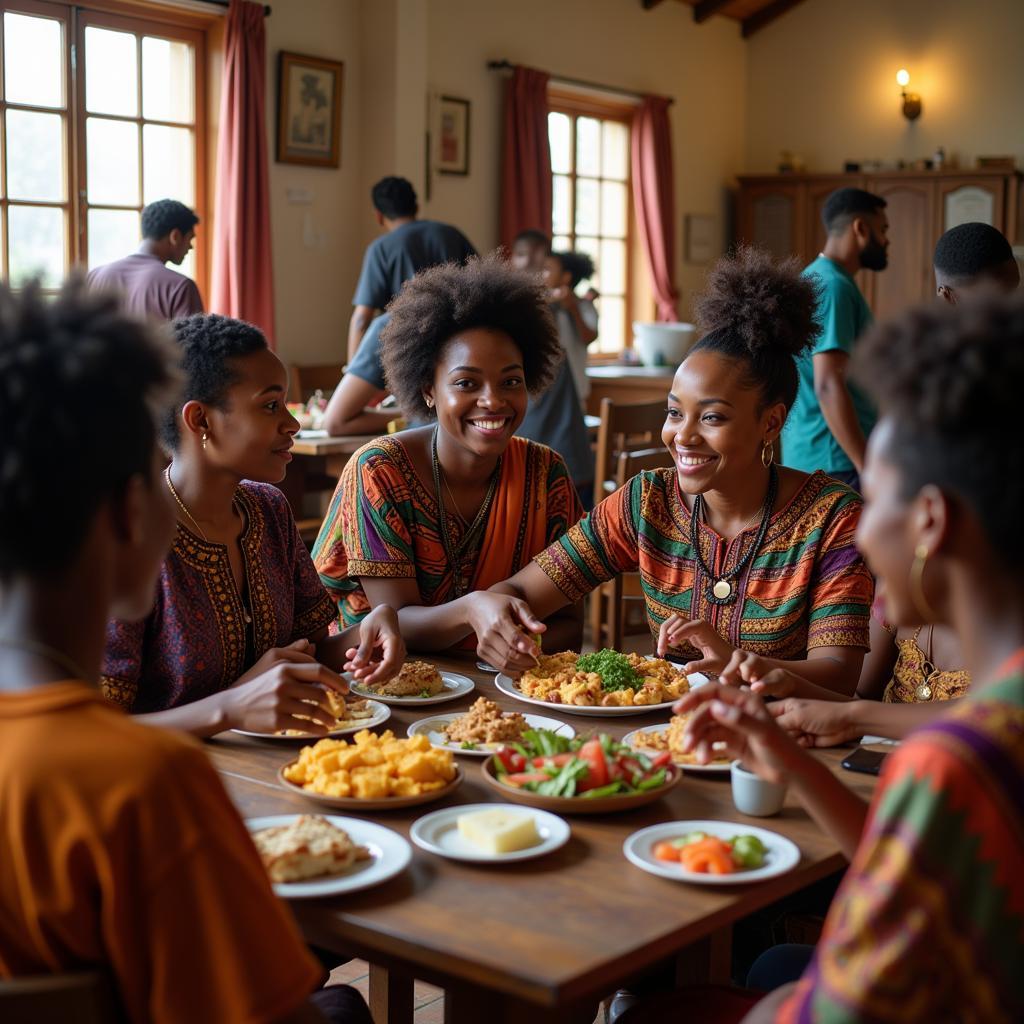The Enigmatic African Tribe with Long Necks: Unveiling the Kayan Tradition
The term “African Tribe With Long Necks” often leads people to think of the Kayan people, though they are originally from Myanmar (Burma), not Africa. Their striking appearance, characterized by the brass neck rings worn by women, has captivated the world’s imagination for decades. This practice, often misinterpreted as neck elongation, actually creates the illusion of a longer neck by pushing down the collarbone and compressing the rib cage. Let’s delve deeper into the rich history and cultural significance of this unique tradition.
The Kayan, also known as Padaung, are a subgroup of the Karenni people, a Tibeto-Burman ethnic group. Their origins are shrouded in mists of time, with various oral traditions and historical accounts offering different perspectives. What is clear is that their history has been marked by migration and adaptation, eventually leading them to settle in the mountainous regions of northern Thailand and Myanmar. It’s important to note that while they’ve become associated with Thailand due to tourism, their cultural roots lie firmly in Myanmar. The brass rings, a powerful symbol of Kayan identity, have also become a source of both fascination and controversy.
Unraveling the Myths Surrounding the Long Neck Tradition
Many misconceptions exist about the Kayan neck rings. Some believe the rings actually stretch the neck, while others think removing them would be fatal. These are not true. The rings create an illusion of a longer neck by gradually lowering the shoulders and compressing the rib cage. The neck itself remains the same length. Removing the rings will not cause harm, although the collarbone and ribs may take time to return to their original position. For more information on other African traditions, check out this insightful article on African Tribe Neck Rings.
The Cultural Significance of the Brass Coils
Why do Kayan women wear these rings? The reasons are complex and intertwined with cultural identity, aesthetics, and spiritual beliefs. Traditionally, the rings were seen as a form of protection against tiger attacks, a symbol of beauty, and a mark of tribal affiliation. Some stories associate the rings with a desire to differentiate themselves from other tribes, while others link them to the mythical origins of the Kayan people, descended from a dragon-human hybrid.
The Evolving Role of the Neck Rings in Modern Times
The neck rings have faced scrutiny in recent years, particularly regarding the potential exploitation of Kayan culture for tourism. Some Kayan women have chosen to remove the rings, embracing a more modern lifestyle. Others continue to wear them, viewing them as a powerful symbol of their heritage and a way to connect with their ancestors. This has led to internal debate within the community about the future of this tradition. Articles like African Boer Male Goat, shed light on the nuances and intricacies of African cultures and traditions.
A Glimpse into Kayan Life and Culture beyond the Rings
While the neck rings are undoubtedly a striking feature of Kayan culture, they are just one aspect of a rich and vibrant tapestry. The Kayan people are skilled weavers and artisans, creating intricate textiles and handicrafts. Their music, dance, and oral traditions are integral parts of their cultural identity, passed down through generations. Their agricultural practices and close relationship with the land also play a significant role in shaping their worldview.
The allure of the “African tribe with long necks” continues to draw attention to the Kayan people. While it’s important to address the geographical inaccuracy and focus on respectful representation, the intrigue offers an opportunity to learn about the fascinating cultural significance behind the brass rings and the resilience of the Kayan people in preserving their identity. If you are fascinated by African art, you might find African Human Tribal Art Paintings Women captivating. Explore the intricacies of African Animals Word Crush, to dive deeper into the vibrant fauna of Africa. And for a visual exploration of the African landscape, African Desert Diagrams for Drawing provides a unique perspective.
FAQ
- What are the neck rings made of? They are made of brass coils.
- Do the rings stretch the neck? No, they compress the collarbone and rib cage.
- Is it dangerous to remove the rings? No, but it may take time for the bones to readjust.
- Why do Kayan women wear the rings? For cultural identity, beauty, and spiritual reasons.
- Are all Kayan women still wearing the rings today? No, some have chosen to remove them.
Situations related to search queries:
- Tourist seeking information: Someone planning a trip to Thailand and wants to know more about the Kayan people and their traditions.
- Student researching cultural practices: An individual studying anthropology or cultural studies and researching the use of body modification in different cultures.
- Curious individual: Someone who saw a picture of a Kayan woman and is intrigued by the neck rings and their significance.
Further Exploration
For further exploration, consider these related topics:
- Kayan language and literature
- Traditional Kayan music and dance
- Kayan agriculture and relationship with the environment
For any inquiries or assistance, feel free to contact us. Phone: +255768904061, Email: kaka.mag@gmail.com, or visit us at: Mbarali DC Mawindi, Kangaga, Tanzania. Our customer service team is available 24/7.


